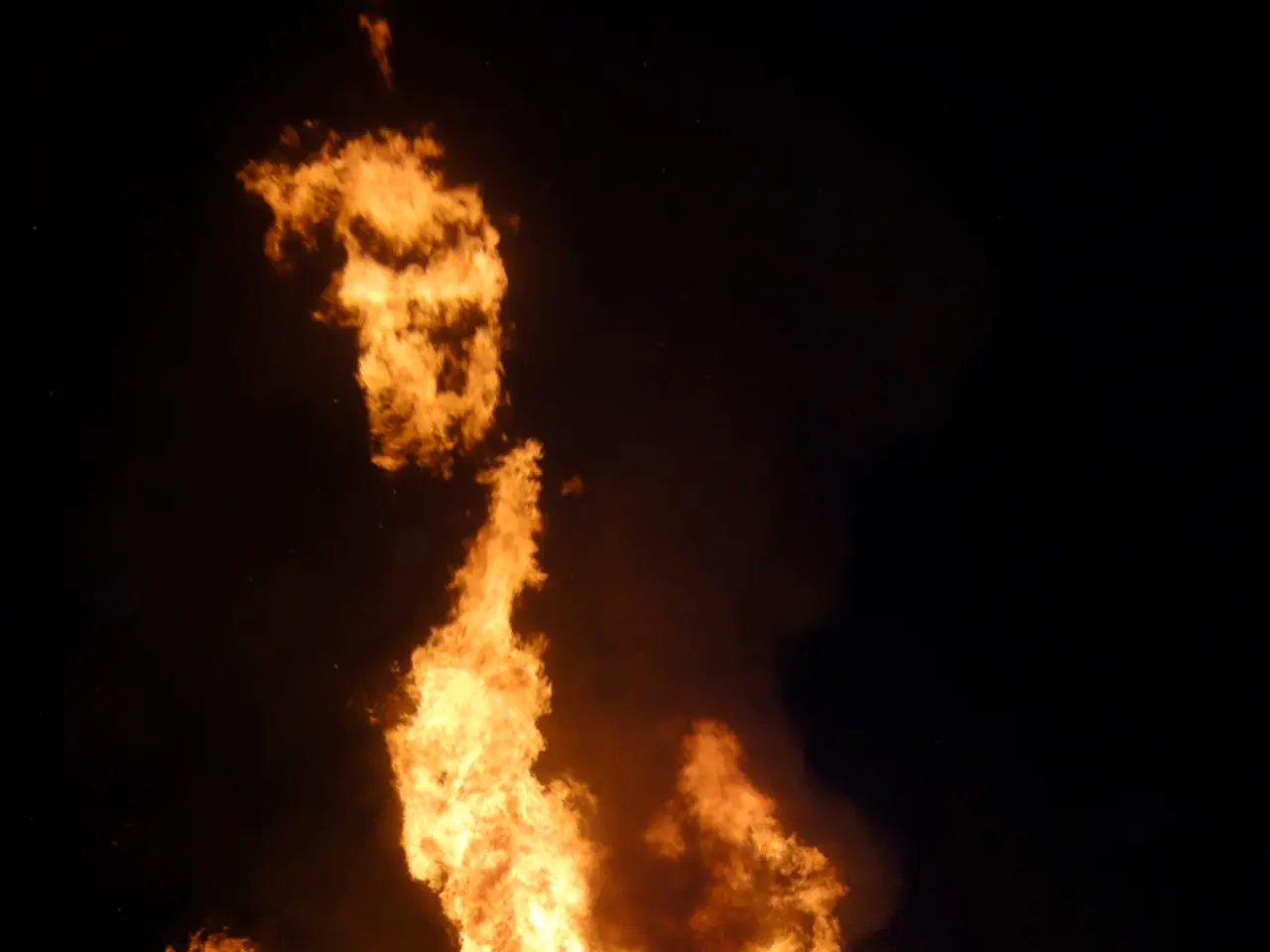Massive Fire Whirl Soaring Over 3,000 Feet in Western Australia Caught on Camera
In the heart of Western Australia, a spectacular event unfolded this week as a fire tornado, also known as a fire whirl, was captured on camera. The footage was taken on a camera mounted on a Department of Parks and Wildlife fire truck at Watheroo.
Fire tornadoes are features that spin off of hot fires, and they can reach impressive heights. This one extended more than 3,000 feet into the air. While they are relatively common, according to Neil Burrows, a senior fire scientist for the Australian department, they are rarely caught on video.
These meteorological phenomena form under specific conditions. Intense heat from a wildfire creates a strong, rapidly rising updraft that begins to rotate, often enhanced by variable wind directions, wind speed shearing, and local topography. This process can generate a pyrocumulonimbus cloud (pyroCb)—a thunderstorm-like cloud fueled by the fire's heat and smoke—that supercharges the local wind environment, allowing a fire whirl to evolve into a tornadic-scale vortex with extremely high wind speeds and temperatures.
The temperature inside the core of a fire tornado can reach up to 2,000 degrees Fahrenheit (1,093 degrees Celsius). Wind speeds can reach up to 99 miles per hour, less than the top speed of traditional tornadoes. Interestingly, the thinner the column, the faster the wind in a fire tornado.
Fire tornadoes can potentially reignite ashes sucked up from the ground due to their high temperature. Combustible gases released by nearby burning vegetation can get sucked up into a fire tornado but may only ignite when they mix with enough oxygen, which might happen farther up the column.
Identifying conditions conducive to fire whirls could be a heads-up for firefighters, as stated by Jason Forthofer, a mechanical engineer at the U.S. Forest Service's Missoula Fire Sciences Laboratory in Montana. In fact, a video of a dramatic fire tornado in Hawaii was the fifth most popular video on a certain website in 2010.
While both involve rotating columns of air, fire tornadoes arise primarily from fire-driven heat and local atmospheric conditions combined with wind shear, whereas traditional tornadoes develop from larger-scale thunderstorm supercells and atmospheric instability, without the fire component.
The central burning core of a fire tornado can be one to three feet across, expanding up to tens of feet in the largest cases. Despite their impressive size, they typically last minutes to around two hours and usually have a smaller diameter, although they can reach the width of a football field. Unlike traditional tornadoes, fire tornadoes generate their own localized weather and can reach high enhanced Fujita (EF) scale ratings, matching or approaching the strength of traditional tornadoes but with the addition of extreme heat and fire spread.
In summary, the recent sighting of a fire tornado in Western Australia serves as a stark reminder of the powerful and unpredictable forces at play during wildfires. Understanding these phenomena is crucial for the safety of firefighters and the protection of communities at risk.
[1] Burrows, N. (2018). Fire whirls: the science of fire tornadoes. Springer, Cham. [2] Forthofer, J. (2015). Fire whirls: what they are and why they matter. Fire Research Communications, 1(1), 1-11.
- In addition to general-news about wildfires, understanding the science of fire tornadoes, as detailed in Burrows's book "Fire whirls: the science of fire tornadoes" (2018), can aid in predicting potential accidents and preparedness for firefighters.
- By analyzing environmental conditions that lead to the formation of fire whirls, as Jason Forthofer discussed in his article "Fire whirls: what they are and why they matter" (2015), we can identify risks and take necessary precautions to safeguard both firefighters and the general public.
- The recent event of a fire tornado in Western Australia not only showcases the breathtaking beauty of nature but also underscores the immense danger and need for research to mitigate the impact of such weather events, especially given their potential to ignite new accidents and contribute to the spread of wildfires.







